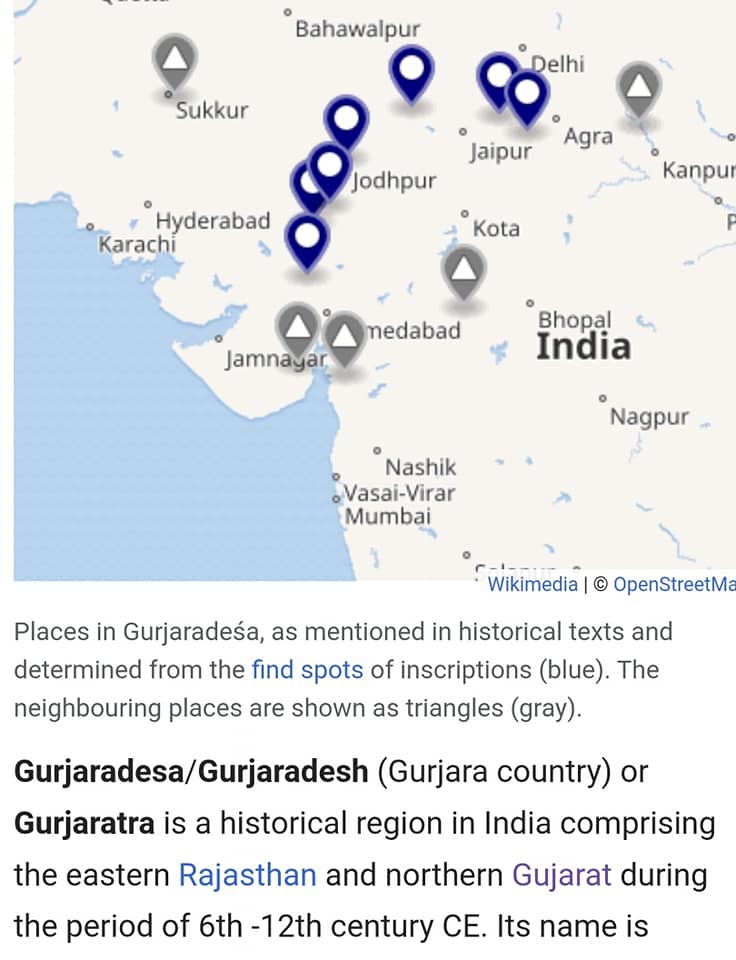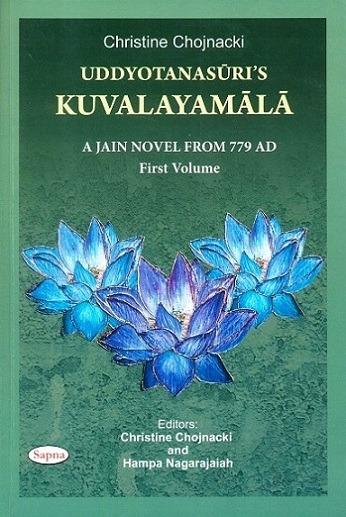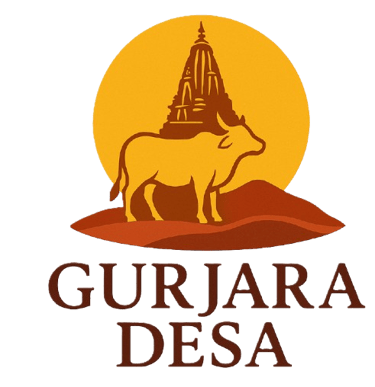

Welcome to Gurjara Desa, the historic region that once spanned southern Rajasthan and northern Gujarat — a flourishing land of art, learning, and political strength. Known in classical sources as Gurjaradeśa, this region was celebrated for its temples, cities, and poets who shaped the cultural soul of western India.
Contrary to later misconceptions, “Gurjara” never referred to a tribe or race, but to the inhabitants of Gurjara Desa — the people of a great cultural and political region that gave rise to the Pratihāras, the Chaulukyas (Solankis), and many other dynasties of medieval India.
What Was Gurjara Desa?
In early medieval India, “Gurjara Desa” was the name of a distinct geographical and cultural region.
It lay between the Aravalli hills and the Sabarmati River, extending south into modern Gujarat and north into Mewar and Marwar in Rajasthan.
The capital, Bhillamala (modern Bhinmal), was a famed center of learning.
Ancient Sanskrit and Prakrit texts describe it as a land of scholars, merchants, and rulers, where Jain, Shaiva, and Vaishnava faiths coexisted harmoniously.
“Does the word primarily denote the country, Gurjara Desa, Gurjarabhūmi, Gurjarātra, or Gujarat?”
— Vasantavilasa, Balachandra Suri
Balachandra Suri’s rhetorical question highlights the identity of Gurjara not as a community, but as a civilizational region — the Gurjara country itself.
Gurjar Desa: Heart of West India


📜 Literary Testimonies of Gurjara Desa
Uddyotana Suri’s Kuvalayamālā Kaha & Balachandra Suri’s Vasantavilāsa
Two great Jain ācāryas — Uddyotana Suri (8th century CE) and Balachandra Suri (13th century CE) — immortalized Gurjara Desa in literature.
Their works form a bridge between the early and late medieval imagination of this land.
The Age of the Imperial Pratiharas and Chaulukyas
The Imperial Pratihara dynasty (Parihar Rajputs) arose from this very land between the 8th and 10th centuries CE, after defeating the Chavda Rajputs.
Under rulers like Nagabhata and Mihir Bhoja, they became protectors of northern India’s sacred geography.
Later, the Chaulukyas (Solankis) of Gujarat — especially Kumarapala and Siddharaja Jayasimha — continued this legacy.
Their reign gave birth to the famous Maru-Gurjara architectural style, seen in temples like Modhera Sun Temple, Taranga, and Patan’s Rani-ki-Vav.
🪶 Did you know? The word “Gujarat” evolved from Gurjaratra, meaning the realm of the Gurjaras — literally, the land of Gurjara Desa.
Society and Culture of Gurjara Desa
Gurjaradeśa was renowned for its intellectual vigor, artistic refinement, and religious inclusiveness.
Cultural Highlights:
Languages: Sanskrit, Prakrit, Apabhraṃśa, and early Gujarati
Faiths: Jainism, Shaivism, Vaishnavism, and Shaktism coexisted peacefully
Centers of Learning: Bhillamala, Patan, Dholka, and Valabhi
Art & Architecture: The Maru-Gurjara style became a pan-Indian model of temple design.
Folk traditions like Garba, Ghoomar, and stone-carving crafts still echo the creativity of this ancient region.
Kuvalayamālā Kaha (c. 778 CE) – Uddyotana Suri
Composed in Jain Prakrit, this prose romance is one of the earliest narrative texts to mention Bhillamala, the capital of Gurjara Desa.
It paints a vivid picture of:
Urban sophistication, with schools, monasteries, and markets
Religious pluralism, where Jain monks, Shaiva ascetics, and Buddhists coexisted
Trade and prosperity, connecting Rajasthan, Gujarat, and Sindh
Scholarly life, positioning Bhinmal as a seat of grammar and logic
“Bhillamala, radiant as the lotus of knowledge, where wise men gather like bees.” — Kuvalayamālā Kaha
Here, Gurjara clearly refers to the territory and its people, not an ethnic label.
Vasantavilāsa (13th century CE) – Balachandra Suri
Five centuries later, Balachandra Suri celebrated the same Gurjara land in lyrical Sanskrit prose.
He described a prosperous country of cultured people, rich in learning and faith, bridging the earlier Pratihāra and later Chaulukya periods.
Together, Kuvalayamālā and Vasantavilāsa show how Gurjara Desa endured as a geographical-cultural identity over 500 years of history.
The Maitrakas and Chavdas: Early Pillars of Gurjaradesha
Long before the rise of the Chaulukyas and the Pratiharas, the Maitraka dynasty of Vallabhi (c. 475–775 CE) laid the foundations of stable governance and learning in Gurjaradesha.
Their capital Vallabhi, near modern Bhavnagar, became a renowned center of Buddhist and Jain scholarship, attracting students from across the subcontinent. Inscriptions and literary records portray Vallabhi as a beacon of education and administration, ensuring continuity after the fall of the Guptas.
Following them, the Chavdas (c. 8th–10th century CE) of Vardhamanapura (modern Patan) inherited and expanded this legacy. The Chavda rulers — especially Vanaraja Chavda, the founder of Anahilapataka — connected the cultural spirit of Vallabhi with the emerging political identity of north Gujarat. Their rule paved the way for the later Chaulukyas (Solankis), who perfected the Maru-Gurjara style and elevated the region’s prestige.
Together, the Maitrakas and Chavdas represent the transitional roots of Gurjaradesha — linking the ancient world of Vallabhi’s learning with the medieval brilliance of Patan and Anahilapataka
